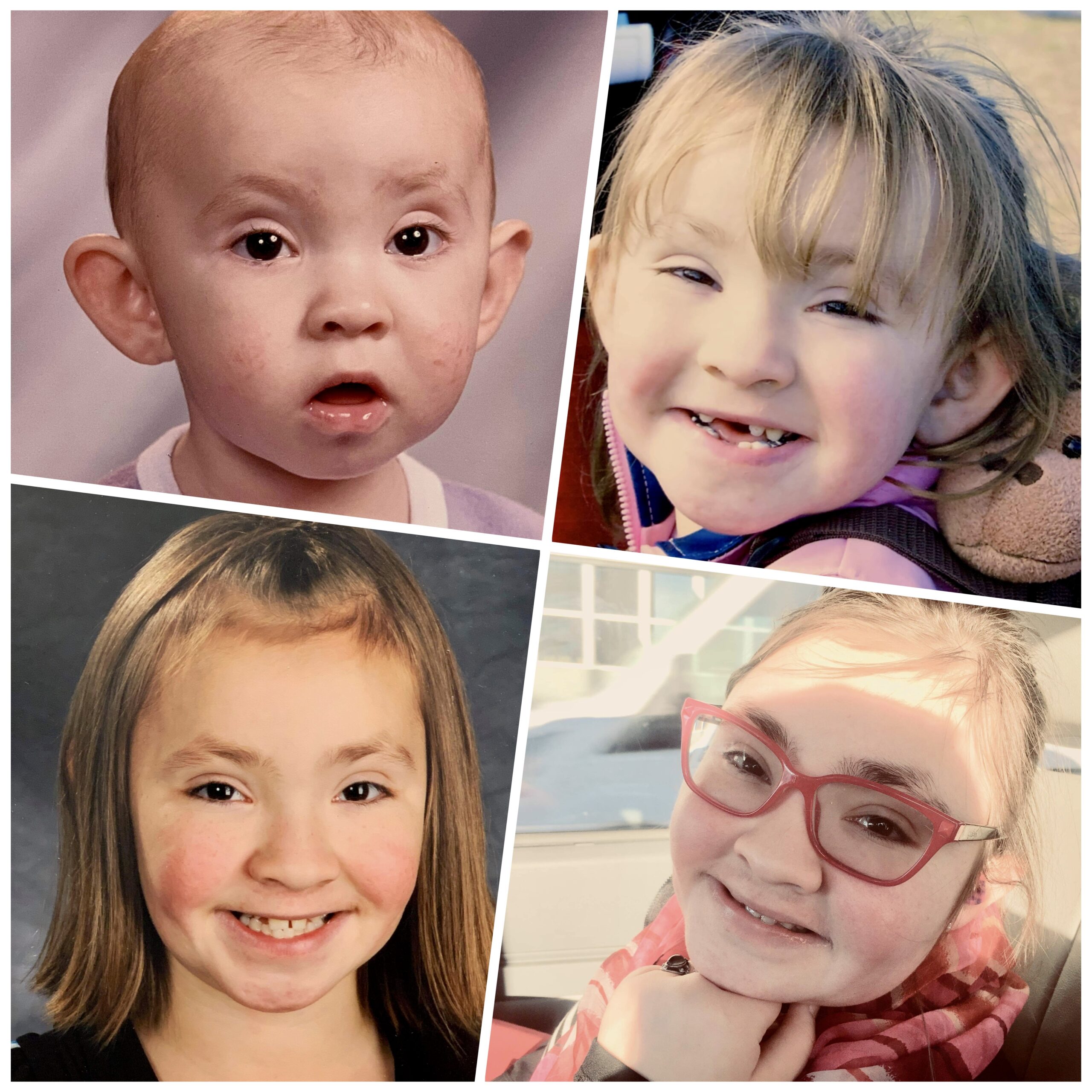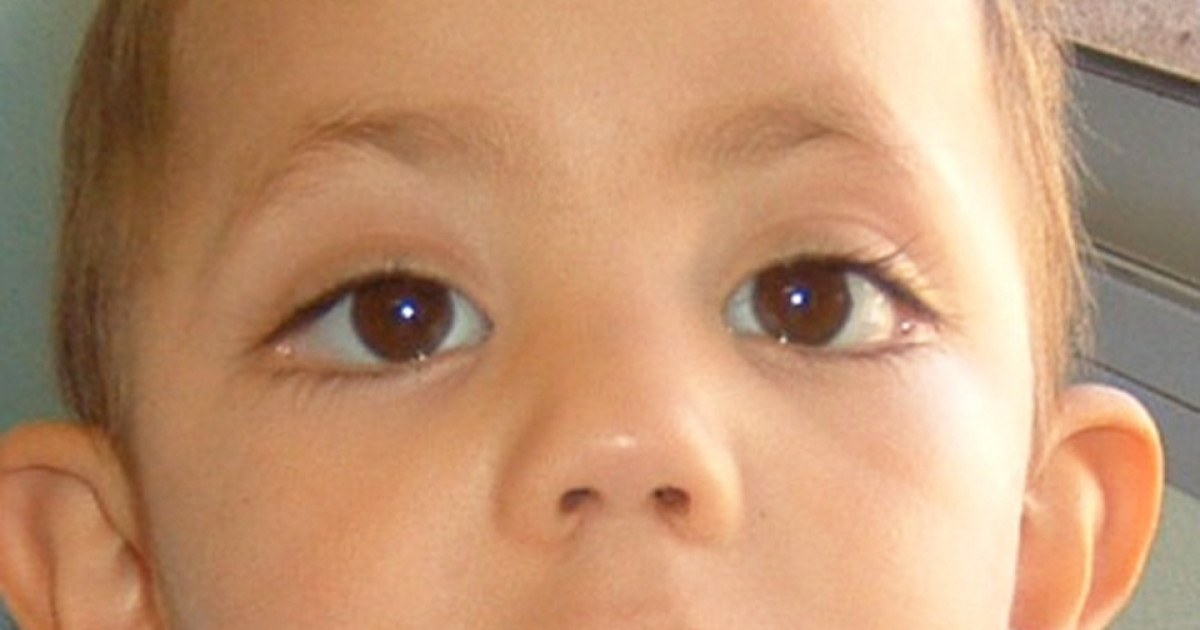Kabuki szindróma
vákuum fólia tekercs lidl
Kabuki Szindróma & RIROSZ. A Kabuki-szindróma egy ritka, több szervrendszert érintő betegség, amelyhez jellegzetes arcvonások, a növekedés elmaradása, változó mértékű mentális. Kabuki-szindróma, tünetei és kezelése | Anyák ma. El A Kabuki-szindróma ritka betegség amelyeknek valószínűleg genetikai okai vannak. Az ebben szenvedő gyermekek különböző fizikai és mentális problémákkal küzdenek, amelyek közül néhányat ebben a cikkben részletezünk. Kabuki-szindróma által érintett gyermekek nincs alacsonyabb várható élettartamuk, mint a normálisnak tekintik.. Amit a Kabuki-szindrómáról tudni kell - Orvos 24. A Kabuki-szindróma egy ritka genetikai állapot, amely a szervezet több rendszerét érinti. A tünetek személyenként változnak, és az enyhétől a súlyosig terjedhetnek. Nincs gyógymód. A kezelés célja a tünetek kezelése és az életminőség javítása.. Kabuki-szindróma: tünetek, okok és kezelés - NairaQuest. A Kabuki-szindróma egy furcsa és szokatlan betegség, amelyben a szenvedő egy sor betegségben nyilvánul meg jellegzetes fiziológiai jellemzők, valamint értelmi fogyatékosság és fiziológiai elváltozások, amelyek nagyon súlyosak lehetnek.. Kabuki szindróma tünetei, okai és kezelése / Klinikai pszichológia .. Kabuki-szindróma egy furcsa és szokatlan betegség, amelyben a szenvedő egy sorozatot mutat Megkülönböztető fiziológiai jellemzők és szellemi fogyatékosság és fiziológiai változások, amelyek nagyon súlyosak lehetnek


gobuda gym
. Eddig nincs széles körű információ a betegség tüneteiről és lefolyásáról; a szindrómát nem lehet megelőzni.. Kabuki szindróma tünetei, okai, kezelése / Mentális zavarok .. Kabuki szindróma tünetei, okai, kezelése. az Kabuki szindróma (SK), más néven Kabuki smink szindróma -Kabuki make-up szindróma, a genetikai eredetű multiszisztémás patológia (Pascual-Castroviejo et al., 2005). Klinikailag a kabuki-szindrómát az atípusos arcvonások, izom-csontrendszeri rendellenességek vagy rendellenességek .
lakás belmagasság előírás 2022
. Kabuki-szindróma: tünetek, okok és kezelés - yes, therapy helps!. Kabuki-szindróma: tünetek, okok és kezelés. December 22, 2023. Vannak nagy számban ritka és kevéssé ismert betegségek hogy nem kap elég figyelmet. Ezek a rendellenességek nagy szenvedést jelentenek azok számára, akik szenvednek rájuk és családjaik számára, akik nem értik, mi történik, hogyan és miért szeretettel.. Kawasaki-betegség tünetei és kezelése | Házipatika. A Kawasaki-betegség (Kawasaki-kór, Kawasaki-szindróma) egy olyan súlyos, immunológiai mechanizmusokon alapuló érbetegség, amelyet vélhetőn valamilyen élő kórokozó általi fertőzés vált ki. A szindróma lényege az erek, döntően a közép- és kisméretű verőerek, illetve a visszerek gyulladásos állapota.. PDF A 22-es csapdája? A 22q11 kromoszóma deletiós szindróma változatos .. Melegh Béla dr. Pécsi Tudományegyetem, Általános Orvostudományi Kar, Klinikai Központ, Orvosi Genetikai Intézet, Pécs 22q11 deletiós szindróma szerteágazó klinikai tüneteket mutató, általában jellegzetes arcdysmorphiával és több- szörös fejlődési rendellenességgel járó tünetegyüttes.. Kabuki syndrome - Wikipedia. Kabuki syndrome (also previously known as Kabuki-makeup syndrome (KMS) or Niikawa-Kuroki syndrome) is a congenital disorder of genetic origin. [1] [2] It affects multiple parts of the body, with varying symptoms and severity, although the most common is the characteristic facial appearance.. Kabuki-szindróma - Okok, tünetek és kezelés - Egészségügy 2023. 1. Mi az a Kabuki-szindróma? Kabuki makeup szindróma, KMS, Niikawa-Kuroki szindróma, Niikawa-Kuroki szindróma, számos születési rendellenességgel. A betegség prevalenciáját 1:32 000 körülire becsülik. Legjellemzőbb tünete a sajátos arcvonások, amelyek a japán Kabuki színház színészeinek jellemzését juttatják eszünkbe.. Kabuki-szindróma: tünetek, okok és kezelés - Pszichológia - 2023. A Kabuki-szindróma egy furcsa és szokatlan betegség, amelyben a szenvedő egy sor betegségben nyilvánul meg megkülönböztető élettani jellemzők az értelmi fogyatékosság mellettés fiziológiai változások, amelyek nagyon súlyosak lehetnek.. Mi az a kabuki betegség? - gobertpartners.com. A Kabuki-szindróma (korábban Kabuki-smink szindróma (KMS) vagy Niikawa-Kuroki-szindróma néven is ismert) egy genetikai eredetű veleszületett rendellenesség. A test több részét érinti, különböző tünetekkel és súlyossággal, bár a leggyakoribb az arc jellegzetes megjelenése.. Kawasaki-szindróma: tünetek és kezelés gyerekeknél. A Kawasaki-szindróma elsősorban az öt év alatti gyermekeket érintő ismeretlen eredetű betegség, melyben szív érintettség is előfordulhat. Kiss Virág 2018. Január 15. Kawasaki-szindróma: tünetek és kezelés gyerekeknél Kawasaki-szindróma A betegséget elsőként Tomisaku Kawasaki japán gyermekorvos ismertette 1967-ben.. Kawasaki-szindróma - A kései diagnózis végzetes is lehet!. A Kawasaki-szindróma vagy nyálkahártya nyirokcsomó-szindróma olyan betegség, amely az artériákban, vénákban és kapillárisokban gyulladást okoz. Ez a nyirokcsomóra is hatással van, és tüneteket okoz az orrban, a szájban és a torokban. A gyermekek szívbetegségének leggyakoribb oka. A Kawasaki Disease Foundation (KDF .. A koronavírus életveszélyes szövődménye: Kawasaki-szindróma

tsmt torna gyakorlatok beszédfejlődés
. A Kawasaki-szindróma - eddigi ismereteink szerint - főként az 5 évnél fiatalabb gyermekeknél előforduló, elsősorban az érfalak gyulladásával járó tünetcsoport, ami változatos tünetekkel jár, köztük: 1-2 héten át elhúzódó, újra és újra fellángoló, a lázcsillapítókra alig reagáló lázzal,. Kawasaki-betegség - Egészségvonal. A Kawasaki-betegség diagnosztizálása. A Kawasaki-betegség kezelése. A Kawasaki-betegség megelőzése. A Kawasaki-betegség vagy szindróma a kis és közepes artériák gyulladásos betegsége, ami sokszor a szívet oxigénnel és tápanyagokkal ellátó koszorúereket is érinti.. Kawasaki-szindróma - Wikipédia. Kawasaki-szindróma. A Kawasaki-szindróma (mukokután nyirokcsomó szindróma) a kis és közepes méretű artériák gyulladásával ( vasculitis) járó, ismeretlen eredetű megbetegedés, [1] mely leginkább 5 éven aluli gyermekeknél fordul elő.. Hogyan ismerjük fel és kezeljük a Kawasaki-szindróma jellegű .. Április 15. óta szokatlanul nagy számú gyermek szorult intenzív ellátásra Franciaországban egy, a Kawasaki-szindrómához kifejezetten hasonló gyulladásos szindróma miatt. Mit tudunk erről a ritka betegségről? Miben különbözik a klinikai kép a jelenleg kórházban kezelt gyermekek esetén a klasszikus tünetektől?. Kawasaki-szindróma: így néz ki a COVID-19 . - EgészségKalauz. A Kawasaki szindróma legsúlyosabb szövődménye a 10. nap táján megjelenő ún. coronaria arteritis, amit a koszorúerek gyulladásos tágulata, szívelégtelenség, szívritmuszavar, szívizomgyulladás, szívbelhártyagyulladás, trombózis vagy szívinfarktus kísérhet.. A rejtélyes Kawasaki-szindróma tünetei - Gyerekszoba. 2017. November 20. Kawasaki-szindróma gyermekbetegség. A rejtélyes Kawasaki-szindróma tünetei. A Kawasaki-szindróma oka ismeretlen, de azt valószínűsítik, hogy valamilyen fertőzés váltja ki az arra genetikailag fogékony egyénekben, tulajdonképpen egy immunológiai válaszreakció. Családon belül megfigyelhető a halmozódás .. DOC siketvak.hu. FISH teszttel (fluoreszcens in situ hibridizáció) a 22q deléciós szindróma kimutatható. Kabuki szindróma: szintén sok hasonló egészségügyi és viselkedési tünettel járhat. A szemek és az ujjbegyek ugyanakkor különbözőek, valamint a Kabuki szindrómára jellemző a pubertás korai jelentkezése (ez CHARGE esetén nincs így).. インバウンド向け「ナイト歌舞伎」 22日から道頓堀で | 毎日新聞. 日本の伝統芸能に気軽に触れてもらおうと、インバウンド(訪日外国人客)向けの初の歌舞伎公演「Night KABUKI(ナイト歌舞伎) in Osaka Dotonbori」が .. Entry - #147920 - KABUKI SYNDROME 1; KABUK1 - OMIM. Kabuki syndrome is a congenital mental retardation syndrome with additional features, including postnatal dwarfism, a peculiar facies characterized by long palpebral fissures with eversion of the lateral third of the lower eyelids (reminiscent of the make-up of actors of Kabuki, a Japanese traditional theatrical form), a broad and depressed nasal tip, large prominent earlobes, a cleft or high .
vadhajtások gréczi fotók
. Immunopathological manifestations in Kabuki syndrome: a . - Nature. Kabuki syndrome (KS) (OMIM 147920 and 300867) is a rare genetic disorder characterized by specific facial features, intellectual disability, and various malformations. Immunopathological .. PDF Management of Kabuki Syndrome Management Guidelines - Orphanet. Kabuki Syndrome is a rare multiple anomaly syndrome with an estimated incidence of around 1 in 32,000 . It was first described in 1981 by Drs Niikawa and Kuroki, working independently in Japan. The name was selected because of the facial resemblance to the makeup used in traditional Japanese Kabuki theatre.. 歌舞伎症候群 - Wikipedia


barátok közt online sorozatbarát
2015 év slágerei
. The Changing Landscape of Autoimmune Hemolytic Anemia. Kabuki syndrome and Hemoglobinopathies: 4-6%: AIHA and ITP are the most frequent autoimmune complications of Kabuki Syndrome; DAT positivity is frequent, but clinically overt AIHA is rarer in thalassemia (particularly beta intermedia, alloimmunized, and transfused pts). Kabuki syndrome: review of the clinical features, diagnosis and .. Background: Kabuki syndrome (KS), is a infrequent inherited malformation syndrome caused by mutations in a H3 lysine 4 methylase (KMT2D) or an X-linked histone H3 lysine 27 demethylase (UTX/KDM6A). The characteristics in patients with KS have not yet been well recognized. Data sources: We used databases including PubMed and Google Scholar to search for publications about the clinical features .. Kabuki syndrome: international consensus diagnostic criteria. Background Kabuki syndrome (KS) is a clinically recognisable syndrome in which 70% of patients have a pathogenic variant in KMT2D or KDM6A . Understanding the function of these genes opens the door to targeted therapies. The purpose of this report is to propose diagnostic criteria for KS, particularly when molecular genetic testing is equivocal. Methods An international group of experts .. 2024 ICD-10-CM Diagnosis Code Q89.8 - The Webs Free 2023 ICD-10-CM/PCS .. Kabuki syndrome; Stickler syndrome; Williams syndrome; Present On Admission. POA Help "Present On Admission" is defined as present at the time the order for inpatient admission occurs — conditions that develop during an outpatient encounter, including emergency department, observation, or outpatient surgery, are considered POA.. Kabuki syndrome: diagnostic and treatment considerations. Kabuki syndrome (KS) is a rare genetic disorder first diagnosed in 1981. Unknown by most primary care physicians and clinicians in the mental health fields, children with KS present with unique facial characteristics, mental retardation, health problems and socio-emotional delays that are often mistaken for other diagnostic problems.. 歌舞伎面谱综合征 - 维基百科,自由的百科全书. 歌舞伎化妆综合征(Kabuki syndrome)是一种罕见的染色体疾病,1981年由两位日本学者新川和黑木发现。 目前报道的病例多见于日本。因患儿的面容酷肖日本传统的歌舞伎脸谱而得名。 怪异的面容是该病的重要特征,患儿拥有向外延长的眼裂、扁平的鼻尖、鼻中隔短、大且突出的耳。. Histone deacetylase inhibition rescues structural and functional brain .. INTRODUCTION. Kabuki syndrome is an autosomal dominant condition caused by heterozygous loss-of-function mutations in either of two genes (1-3) with complementary functions: lysine-specific methyltransferase 2D (KMT2D) on human chromosome 12 or lysine-specific demethylase 6A (KDM6A) on human chromosome X. KMT2D is a methyltransferase that adds a trimethylation mark to H3K4 (H3K4me3, an open .
dragon ball z 23 rész magyar szinkronnal
210000 usd to huf
. Kabuki-szindróma - Orvosi Genetikai Központ - My Dog. Kabuki-szindróma. A diagnózis a következő genetikai elemzés (ek)/panel segítségével lehetséges Klinikai tünetek. A Kabuki-szindróma ez egy genetikai rendellenesség, amelyben a jellegzetes fenotípus-rendellenességek (lásd alább) mellett mentális retardáció és szinte mindig alacsony termet alakul ki. Bár az arc rendellenességei gyakran láthatók az újszülöttnél, az .. A fetus with Kabuki syndrome 2 detected by chromosomal microarray .. Introduction. Kabuki syndrome, also known as Kabuki make-up syndrome or Niikawa-Kuroki syndrome, is a multiple congenital anomaly syndrome characterized by distinct facial features, intellectual disability, cardiovascular and musculoskeletal abnormalities, persistence of fetal fingertip pads, and postnatal growth deficiency [].As a rare disease, the incidence of this disorder is estimated to .. The strong association of left-side heart anomalies with Kabuki syndrome. Introduction. Kabuki syndrome (KS) is multiple congenital anomaly malformation syndrome, first described by Niikawa et al.1) in 1981. The original description involved any patient with mental retardation, skeletal and auditory anomalies, cardiac defect, and distinctive facial appearance to the traditional make-up used by Japanese actors in the Kabuki theatre1,2).. About Kabuki Syndrome Foundation: Our Core Strategies. Advocating for individuals with Kabuki syndrome by driving research that will change lives. Established in 2018, the Kabuki Syndrome Foundation is a non-profit organization dedicated to accelerating research efforts to treat or cure Kabuki syndrome. We partner with a Medical & Scientific Advisory Board composed of the worlds leading Kabuki .. New Otologic Features and Surgical Treatment in Two Patients with .. The purpose of this study is to describe otological features of two patients with Kabuki syndrome and hearing loss not previously described in medical literature and present the surgical treatment performed and its outcomes. The methods used are report of two patients with Kabuki syndrome with hearing loss, non-consanguineous, detailing the morphological and functional description of their .. Table 5. [Recommended Surveillance for Individuals with Kabuki Syndrome .. A Novel Intronic KMT2D Variant as a Cause of Kabuki Syndrome: A Case Report. Aristizábal E, Diaz-Ordóñez L, Candelo E, Pachajoa H. Appl Clin Genet. 2021; 14:409-416. Epub 2021 Oct 5.. Understanding Kabuki Syndrome Genetics & Epigenetics | KSF. To identify new treatment pathways, we must first understand Kabuki syndrome as an epigenetic disorder. To date, researchers have identified two genes that can cause Kabuki syndrome when variants in the gene cause a dysfunction - known as pathogenic variants. Pathogenic variants in the KMT2D gene (formerly known as MLL2) account for 75% of .. KMT2D gene: MedlinePlus Genetics. Kabuki syndrome. Hundreds of variants (also known as mutations) in the KMT2D gene have been identified in people with Kabuki syndrome, a disorder characterized by distinctive facial features, intellectual disability, and abnormalities affecting other parts of the body. The KMT2D gene variants associated with Kabuki syndrome change one building block (amino acid) in the lysine-specific .. Síndrome de Kabuki: síntomas, causas y tratamiento. Es frecuente que presenten además problemas visuales y auditivos, así como en ocasiones convulsiones. Asimismo resulta habitual que tengan paladar hendido y dificultades de deglución, o vías aéreas muy estrechas que dificultan la respiración. Uno de los síntomas más graves y peligrosos de esta enfermedad es que provoca alteraciones en .. Roya Kabuki Program | Boston Childrens Hospital. The Roya Kabuki Program at Boston Childrens Hospital is a multidisciplinary, patient-centered initiative for children and adults with known or suspected Kabuki syndrome.Although there are no targeted therapies yet for this genetic condition, coordination of clinical care and management improves health outcomes.. Kabuki syndrom - NHI.no. Niikawa N, Matsuura N
latitude 5490
. Kabuki make-up syndrome: a syndrome of mental retardation, unusual facies, large and protruding ears, and postnatal growth deficiency. J Pediatr 1981: 99: 565-569. Adam MP, Hudkins L. Kabuki syndrome: a review. Clin Genet 2004; 67: 209-19. PubMed; Ågrenska: Kabuki syndrom Nyhetsbrev 282. Besøkt juni 2010. www.agrenska.org. All Things Kabuki - Wasilla, Alaska. Kabuki syndrome is a rare genetic disorder originally believed to affect approximately 1 in 32,000 births worldwide. Some geneticists believe the occurrence rate may be as high as 1 in 15,000 births, however this data is unconfirmed. The term genetic means an individual is born with a condition and the cause of that condition resides in his or .. Kabuki syndrome 2 - NIH Genetic Testing Registry (GTR) - NCBI. Kabuki syndrome (KS) is characterized by typical facial features (long palpebral fissures with eversion of the lateral third of the lower eyelid; arched and broad eyebrows; short columella with depressed nasal tip; large, prominent, or cupped ears), minor skeletal anomalies, persistence of fetal fingertip pads, mild-to-moderate intellectual disability, and postnatal growth deficiency.. CHARGE Syndrome - Symptoms, Causes, Treatment | NORD. Kabuki syndrome is a rare, multisystem disorder characterized by multiple abnormalities including distinctive facial features, growth delays, varying degrees of intellectual disability, skeletal abnormalities and short stature. A wide variety of additional symptoms affecting multiple different organ systems can potentially occur.. Kabuki syndrome | Information & support | Contact
gyógypedikűr gombás köröm
. Kabuki syndrome. Also known as: Kabuki Make-up syndrome; Niikawa-Kuroki syndrome Kabuki syndrome is a genetic condition that results in a typical pattern of physical and developmental problems. The facial features of the affected individuals resemble the characters in the Japanese Kabuki theatre, hence the name of the condition.. (PDF) KABUKI SYNDROME AND EPILEPSY - ResearchGate. Background: Kabuki syndrome is a rare disease. In 2018, a global consensus on diagnostic criteria for Kabuki syndrome (KS) was published, diagnosing KS both with and without molecular genetic .
shell gázpalack ár
. Kabuki Syndrome Services at Kennedy Krieger. Kabuki syndrome is a rare congenital disorder characterized by distinctive facial features, growth delays, mild-to-moderate intellectual disability, skeletal abnormalities and short stature. The syndromes true incidence rate is unknown, as many people are not diagnosed properly, but is estimated to be 1 in 32,000 individuals. .. Kabuki syndrome: a Chinese case series and systematic review of the .. Kabuki syndrome or Kabuki make-up syndrome was originally described in 1981 following observations of five Japanese children whose conditions were characterized by mental retardation, dwarfism and peculiar faces and abnormal dermatoglyphics [ 1 ]. Historically, the diagnostic criteria for Kabuki syndrome were mainly based on the typical .. 8085 - Gene ResultKMT2D lysine methyltransferase 2D [ (human)]. The protein encoded by this gene is a histone methyltransferase that methylates the Lys-4 position of histone H3. The encoded protein is part of a large protein complex called ASCOM, which has been shown to be a transcriptional regulator of the beta-globin and estrogen receptor genes. Mutations in this gene have been shown to be a cause of Kabuki syndrome.. CHARGE and Kabuki syndromes: a phenotypic and molecular link. CHARGE syndrome is a complex developmental disorder caused by mutations in the chromodomain helicase DNA-binding gene CHD7. Kabuki syndrome, another developmental disorder, is characterized by typical facial features in combination with developmental delay, short stature, prominent digit pads and visceral abnormalities.. De novo mutations in human genetic disease - Nature. Kabuki syndrome. A rare genetic condition that is characterized by distinctive facial features, skeletal abnormalities and intellectual disabilities. Bohring-Opitz syndrome.. Kabuki Count: The Global Kabuki Syndrome Census. Kabuki Count is the fastest way to show our potential partners the number of families they can impact. The more individuals with Kabuki syndrome we can document, the more attractive our rare disease becomes to pharmaceutical companies, biotech firms, research institutions, clinicians, government funding, and donors — all of whom we need to move treatments forward!
. Frontiers | Syndromic forms of congenital hyperinsulinism. Kabuki syndrome (OMIM #PS147920) is a developmental disorder characterized by recognizable facial features, intellectual disability, postnatal growth deficiency and variable congenital malformations. Pathogenic variants in the autosomal gene KMT2D or in the X-chromosomal gene KDM6A account for approximately 75% and 3-5% of cases, respectively ..